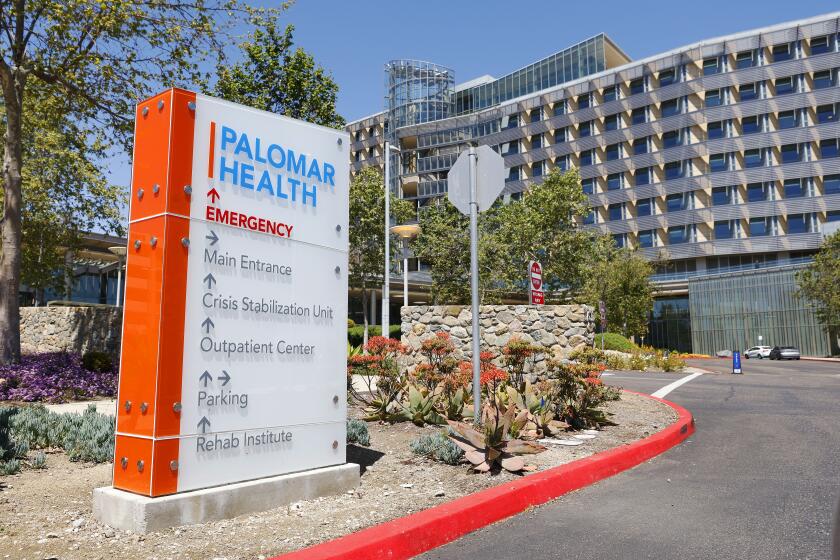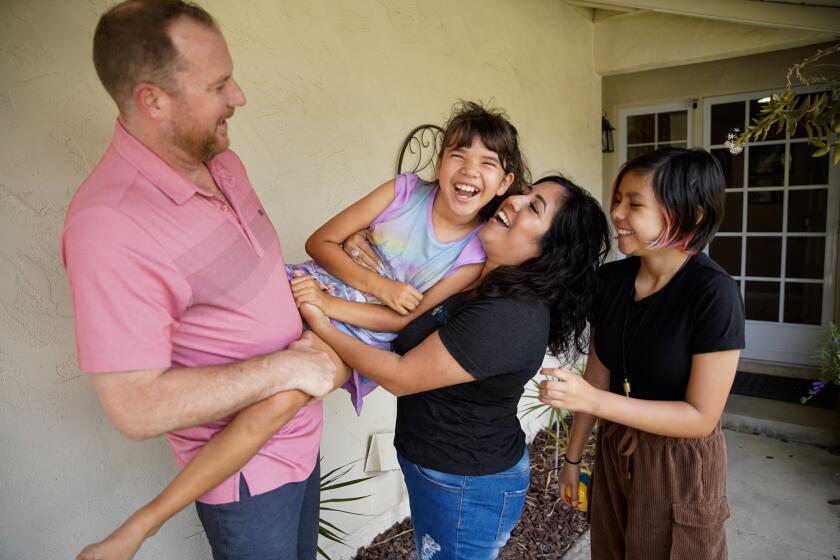Covered CA rates to increase 9 percent, on average, in San Diego County

San Diego County residents with Covered California policies are in for premium increases averaging 9 percent next year, the state’s health insurance exchange announced Thursday.
That’s just a bit higher than the statewide average increase of 8.7 percent, but significantly less than the 16 percent bump listed for Monterey, San Benito and Santa Cruz counties where premium inflation is expected to be the worst.
California is the latest state to release 2019 preliminary rates and, according to the nonprofit Kaiser Family Foundation, some localities have seen even larger upticks as carriers react to the elimination of the Affordable Care Act’s mandate that most Americans must buy coverage or pay a tax penalty. The Kaiser analysis shows, for example, that the average premium in Maryland will increase 30 percent next year with a 24 percent spike in New York and 19 percent in Washington.
Peter Lee, Covered California’s executive director, said in a news conference Thursday morning that the overall size of the Golden State’s exchange -- about 1.1 million Californians are covered by 11 different insurers -- and the exchange’s long-standing commitment to spend about $100 million on marketing during open enrollment this fall, helped keep the increases from reaching double digits.
Still, he said, increased premiums mean that exchange customers are likely to spend about $400 million more on premiums next year. And it’s probably going to get worse
Lee warned that insurers are concerned about new short-term and “association” plans that will be allowed by the federal government next year. Because these new types of coverage would not have to offer as full a suite of benefits as ACA plans do, they are expected to have cheaper premiums and could lure young and healthy people away from their current exchange policies.
Carriers, Lee said, are most worried about the siren song of these cheaper but less robust plans beyond 2019.
“They all raised a yellow flag of warning to say ‘if these products become substantial in 2020, it might be a different picture,” Lee said.
He added that, while rates have gone up for all tiers of plans sold through the exchange, consumers who aren’t already on the cheapest plan in a given metal tier will find during open enrollment this fall that they can reduce their costs by moving down one notch.
Overall, he said, he expects that the federal government’s removal of the requirement to purchase health insurance, called the “individual mandate” by health care wonks, will cause about 160,000 of the exchange’s current customers to let their policies lapse in 2019 with another 100,000 who currently buy health insurance off exchange in the individual market also deciding to exit.
As it has in previous years, the premium-hike pain falls unevenly.
Those who make little enough to qualify for government subsidies will see little change in their monthly premiums and may, in fact, see them decrease in 2019. That’s because ACA rules cap the amount of a person or household’s income that can be spent on premiums. Depending on income level, that cap is from about 3 percent to 10 percent of total income. Anything above that amount gets paid as a subsidy. Because nearly 90 percent of Covered California’s policyholders qualify for subsidies, Lee said that increasing premiums will force the federal government to spend about $250 million more in subsidies than it did last year.
The picture is more grim for those who make enough that they don’t qualify for financial help. According to Covered California, the average unsubsidized premium next year will be $547 per month compared to $503 this year. By comparison, the average subsidized premium will move from $116 to $123 per month.
In previous years, Covered California has always released a preliminary rate “booklet” showing projected increases for each insurer in each of California’s 19 different rating areas. But this year’s information was much less detailed, providing only state and countywide averages that don’t allow consumers to drill down to their specific carriers.
Lee said that the guide was delayed in part by changing information at the federal level about risk-sharing payments between health insurance companies. He said that the guide is still in the works.
“Stay tuned, we’ll be sharing that in a week or two,” Lee said.
Health Playlist


Video: Leaders urge public to help extinguish hepatitis outbreak

San Diego starts cleansing sidewalks, streets to combat hepatitis A

Video: Scripps to shutter its hospice service

Video: Scripps La Jolla hospitals nab top local spot in annual hospital rankings

Video: Does a parent's Alzheimer's doom their children?

EpiPen recall expands

Kids can add years to your life
paul.sisson@sduniontribune.com
(619) 293-1850
Twitter: @paulsisson
Get Essential San Diego, weekday mornings
Get top headlines from the Union-Tribune in your inbox weekday mornings, including top news, local, sports, business, entertainment and opinion.
You may occasionally receive promotional content from the San Diego Union-Tribune.












